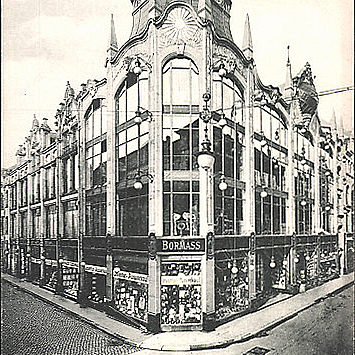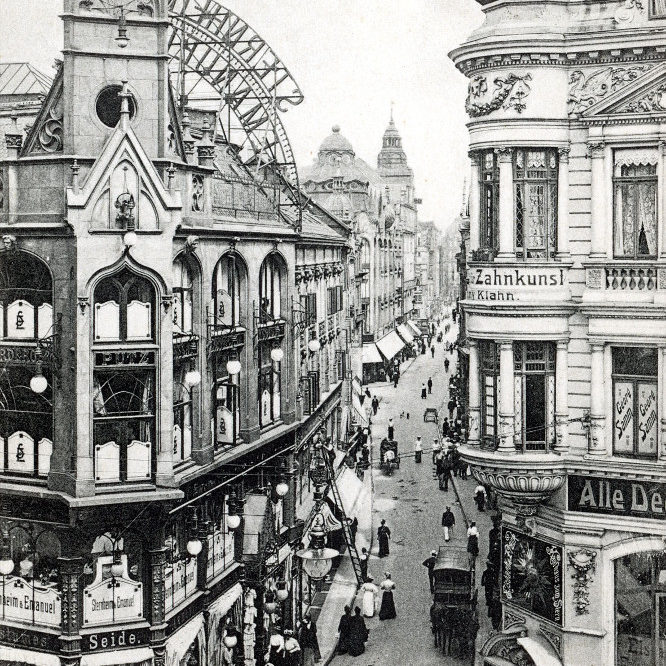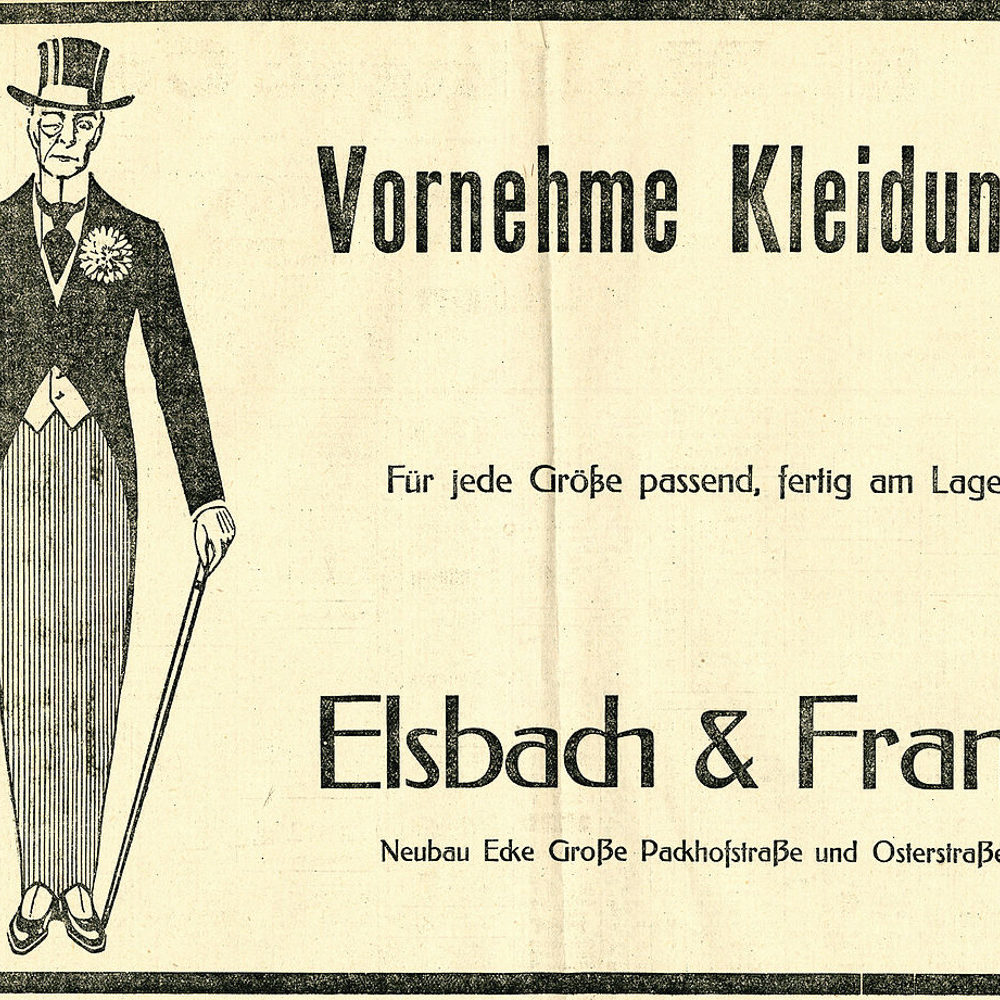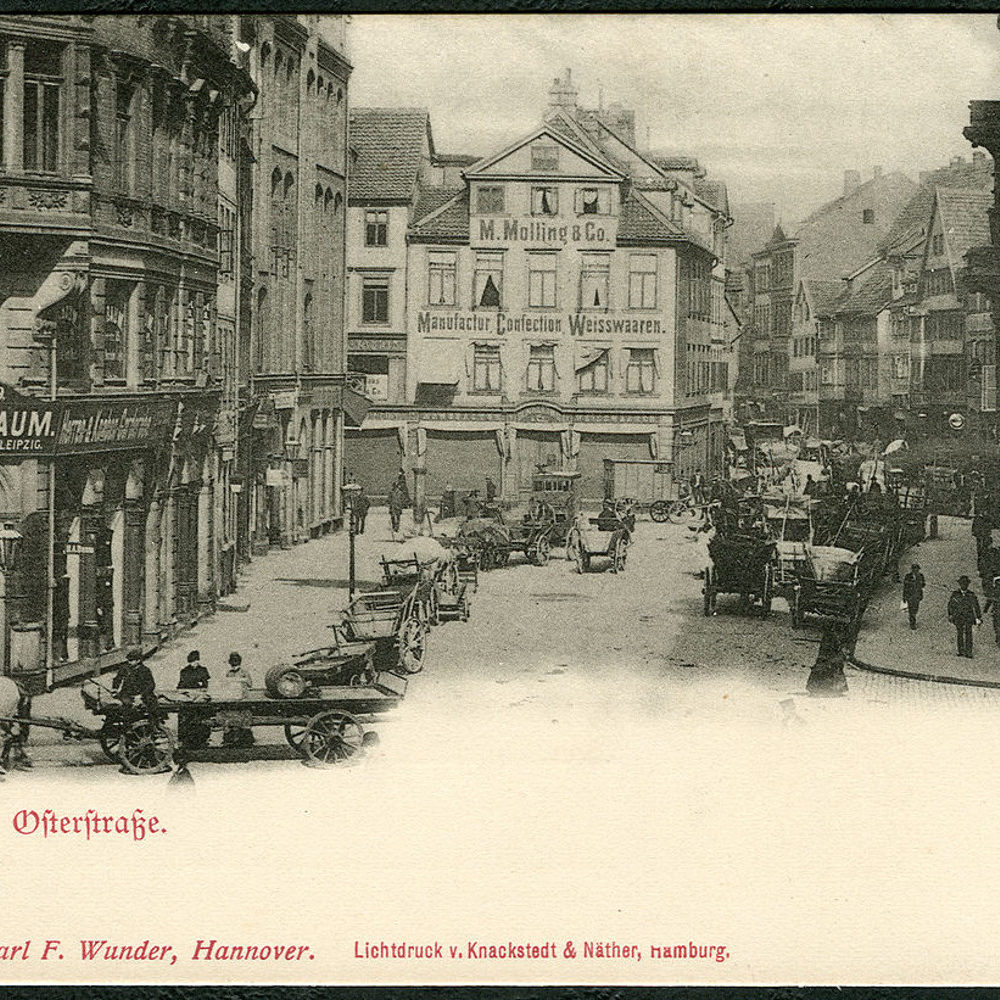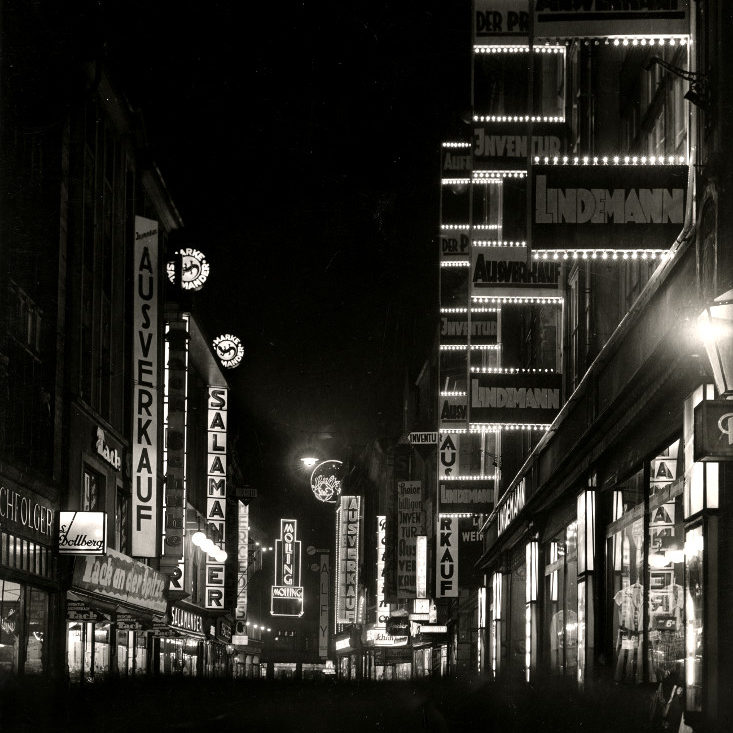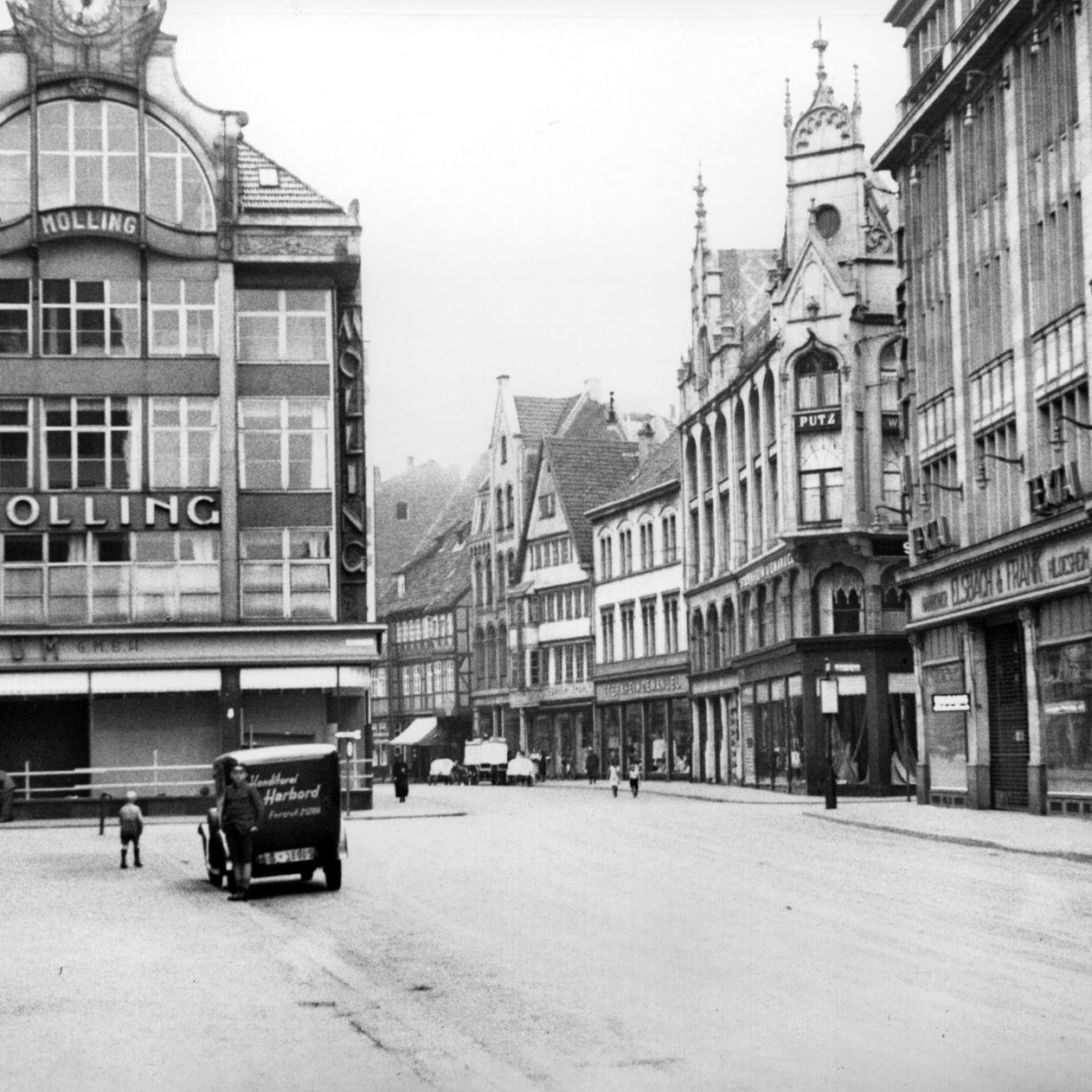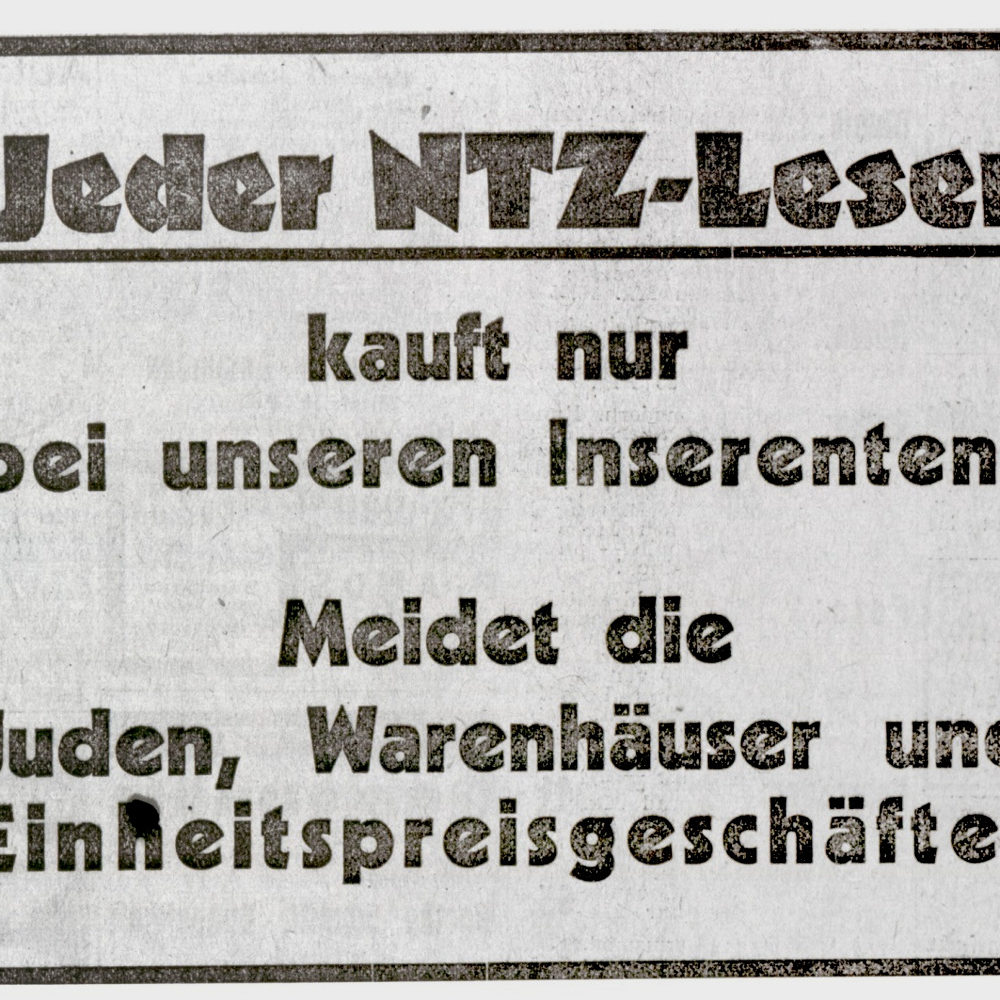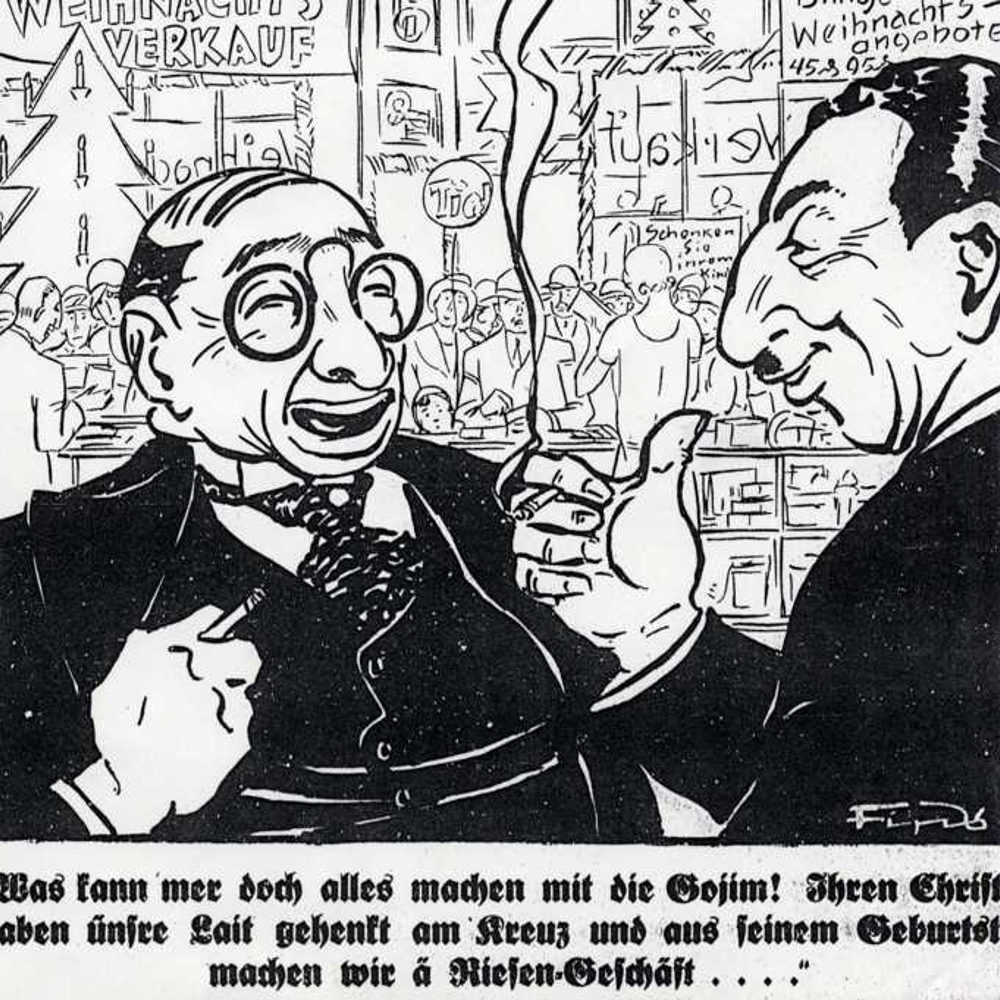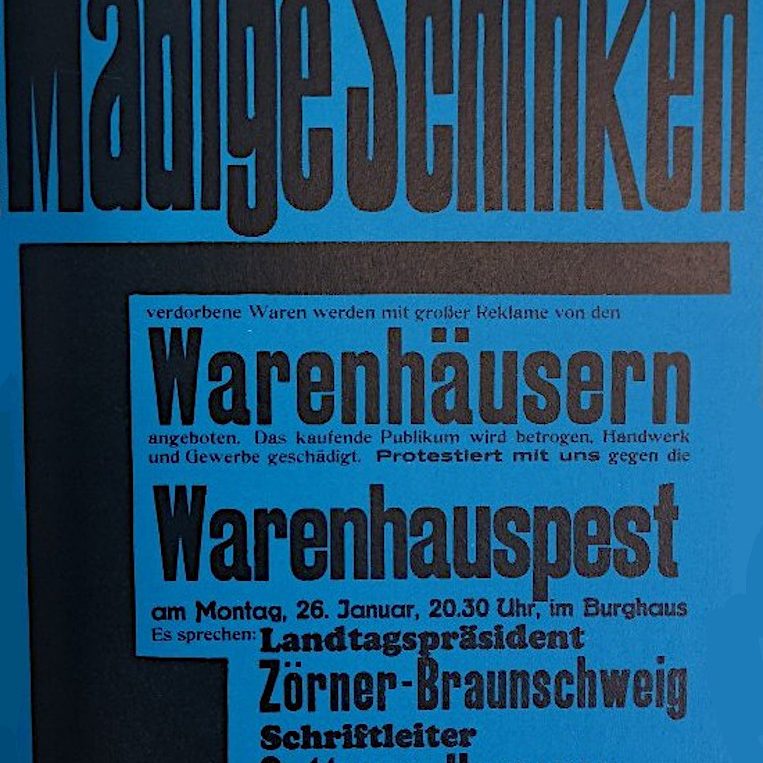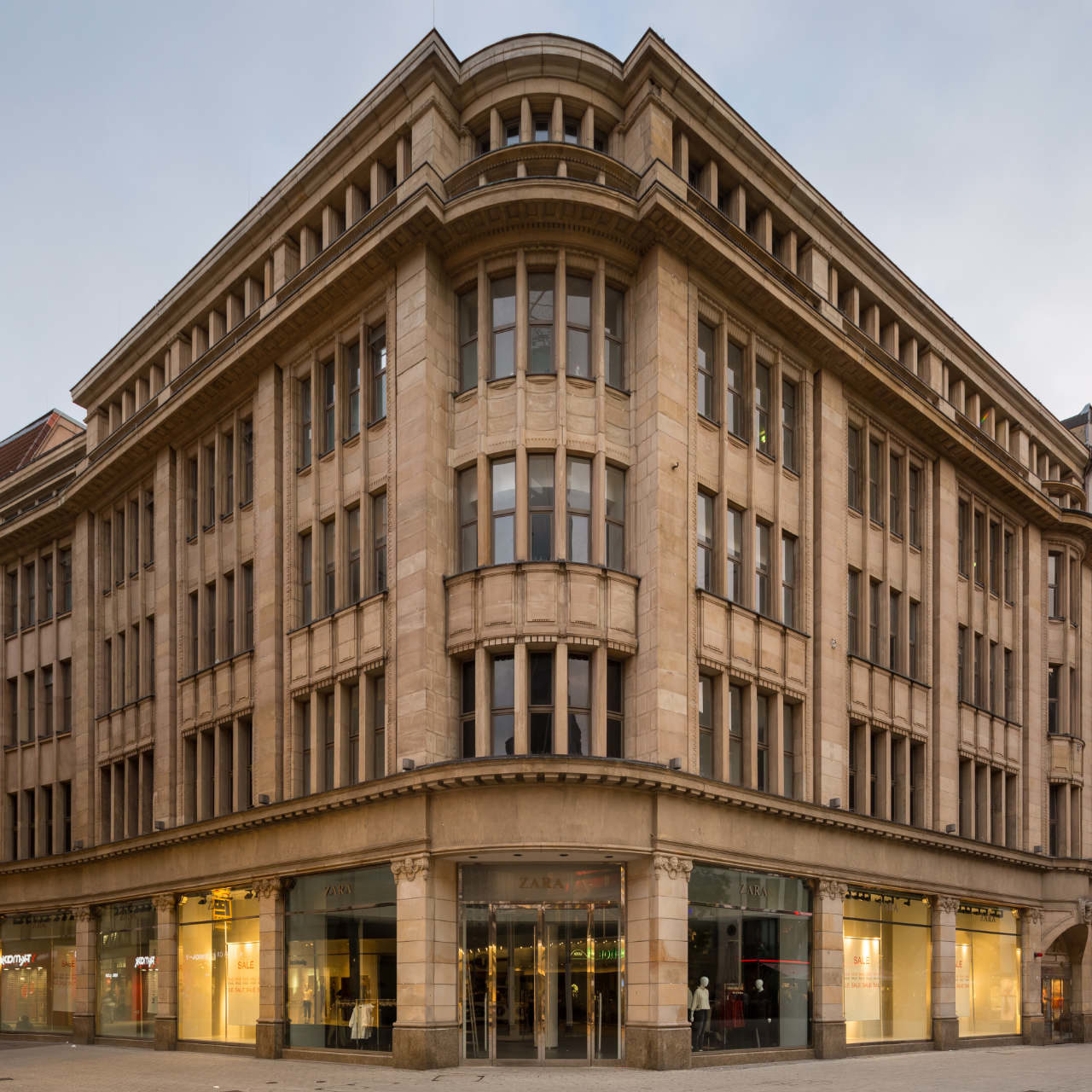Before the turn of the century in 1900, Hanover undergoes a radical transformation, becoming not only an industrial city but also a shopping metropolis. As a result, six department stores are built. Four of them are founded by Jewish businessmen and developed into large companies – until, that is, the economic crisis and the ensuing rise to power of the National Socialists.
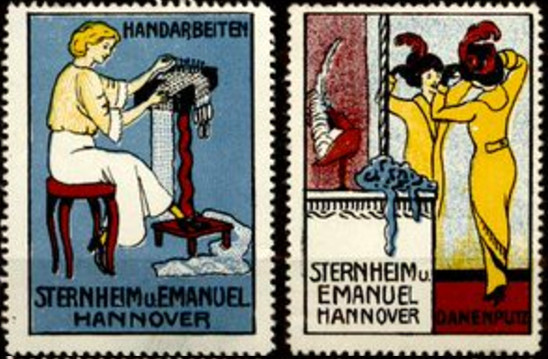
The transformation of a city
In the second half of the 19th century, two narrow streets in Hanover’s Altstadt [Old Town] are transformed from residential and commercial quarters into shopping districts. Grosse Packhofstrasse and Seilwinderstrasse become glittering shopping streets bustling with passers-by. They still are today. Within the space of a few decades, five large department stores are built on the short stretch between Georgstrasse and Osterstrasse: the department stores Bormass, Sternheim & Emanuel, Elsbach & Frank, Molling, and Sältzer. Only the department store Karstadt is slightly further away, on the other side of Georgstrasse.
A new business model
Industrial mass production of consumer goods also revolutionises the range and how goods are displayed: shopping becomes a fun and exciting event! These days this is taken for granted, but at that time it was something completely novel: dedicated departments for clothing, crockery, linen, food and many other products all under one roof. For the first time, items are marked with fixed prices (up until then, each price had to be haggled over individually). The new concepts introduced are the right to exchange goods, intensive advertising, elaborate window displays, home delivery services and a wide range of special offers, but also seasonal sales such as Christmas sales, clearance sales and much more. The use of modern reinforced concrete constructions makes it possible to build multi-floor edifices, featuring spacious storeys with high ceilings, large expanses of windows, and centrally located glass-roofed atriums encircled by galleries. Electricity spotlights the goods and illuminates the streets with outdoor advertising, and enables people to be transported between departments by elevators and escalators.
After achieving legal equality
It is only after 1848 in the Kingdom of Hanover that Jews are allowed to pursue all trades, live in the city and äpurchase land. And they embrace their chance of new opportunities. Here is just one example: two Jewish brothers Adolf and Max Molling, originally from Hildesheim, move to Hanover in 1856 and 1861 respectively. In 1887, the elder brother Adolf founds a publishing house together with a printing works in Hanover’s Nordstadt, which soon becomes one of the most prominent in Germany. Max Molling begins his commercial rise in 1862 with a linen business in Calenberger Neustadt, moving to Seilwinderstrasse in the Altstadt a year later. In 1903, he is successful in opening one of Hanover’s most beautiful department stores built in the Art Nouveau style.
Other Jewish businessmen begin to build in this area of the Altstadt: the department store Sternheim & Emanuel, founded in 1886 in Grosse Packhofstrasse, is so prosperous that at the peak of its success it employs over 300 people in 30 specialist departments. In 1889, the department store Elsbach & Frank opens on the corner of Osterstrasse. Its beautiful new building built 1910-1911 is the only one of Hanover’s old department stores to have survived the bombs. In 1899, the department store Bormass is founded in Grosse Packhofstrasse and in 1905-08, with a new Art Nouveau-style building, it becomes – in the words of its own publicity – “the largest department store in the province of Hanover”.
Anti-Semitic incitement
As early as January 1929, on the eve of the world economic crisis, a leaflet is circulated in Hanover in which department stores, such as Sternheim & Emanuel, Molling, Elsbach & Frank, and Bormass, are named as Jewish robber institutions, which are milking ‘hard-working Germans’. This type of agitation is not new. However, it becomes more and more aggressive and after the transfer of power to the National Socialists on 30 January 1933, it becomes official state policy. The economic crisis hits Hanover’s department stores hard. In addition, anti-Semitic agitation damages sales. As early as 1927, Bormass has to be sold, and in 1933 Elsbach & Frank is declared insolvent. Even before the first boycott of Jewish shops and self-employed Jews on 1 April 1933, the Molling department store falls victim to the terror of SA squads [SA was the abbreviation of ‘Sturmabteilung’, literally ‘Storm Detachment’, the Nazis’ paramilitary wing, known as ‘Brownshirts’]: they destroy the entire ground floor using hammers and axes. Shortly afterwards, the owners decide to rent the entire building to a non-Jewish business. The owners of Sternheim & Emanuel lease their department store in 1938. Between 1927 and 1938, all four of Hanover’s large Jewish-owned department stores change owners or management.
The November pogrom and their flight
The owners of the – now leased – Sternheim & Emanuel department store witness the pogrom from the 9th to the 10th November 1938 in Hanover. According to eyewitnesses, the doors of the Sternheim couple’s home were smashed open by SA men with long axes and crowbars: Louis Sternheim is immediately deported to Buchenwald concentration camp as a way of forcing the family to emigrate. The family emigrates to Switzerland the following year. Upon fleeing, all their assets automatically pass to the treasury of the German Reich. The family of the department store’s joint owner Paul Steinberg emigrates to Argentina in 1938.
The Molling department store is now managed by Fritz Gottschalk, the husband of one of the founder’s granddaughters. On the night of the pogrom, his home escapes being destroyed, however Fritz Gottschalk is arrested on the morning of 10 November. He returns from Buchenwald concentration camp three weeks later, traumatised and with his teeth knocked out. At the end of July 1939, the family manages to obtain the necessary visas to escape to England where, after the start of the war, they are interned as “enemy aliens”. Fritz Gottschalk’s mother stays behind in Hanover and – at the age of 93 – is deported to the Theresienstadt ghetto. She dies shortly after arriving. She is commemorated by a Stolperstein in Oststadt.
Additional online information
Wikipedia entry: Department store [in German]
Jewish history and culture: Jewish department stores [in German]
LEMO The November Pogrom of 1938 [in German]
Fritz Bauer Institute, educational resources: Dagi Knellessen, November Pogroms 1938 [in German] (click to download)
Wikipedia-Beitrag: Warenhaus
Jüdische Geschichte und Kultur: Jüdische Kaufhäuser
LEMO Das Novemberpogrom 1938
Fritz Bauer Institut, Pädagogische Materialien: Dagi Knellessen, Novemberpogrome 1938 (hier als Download)
Further reading: Click here
Texts and images: Michael Pechel

